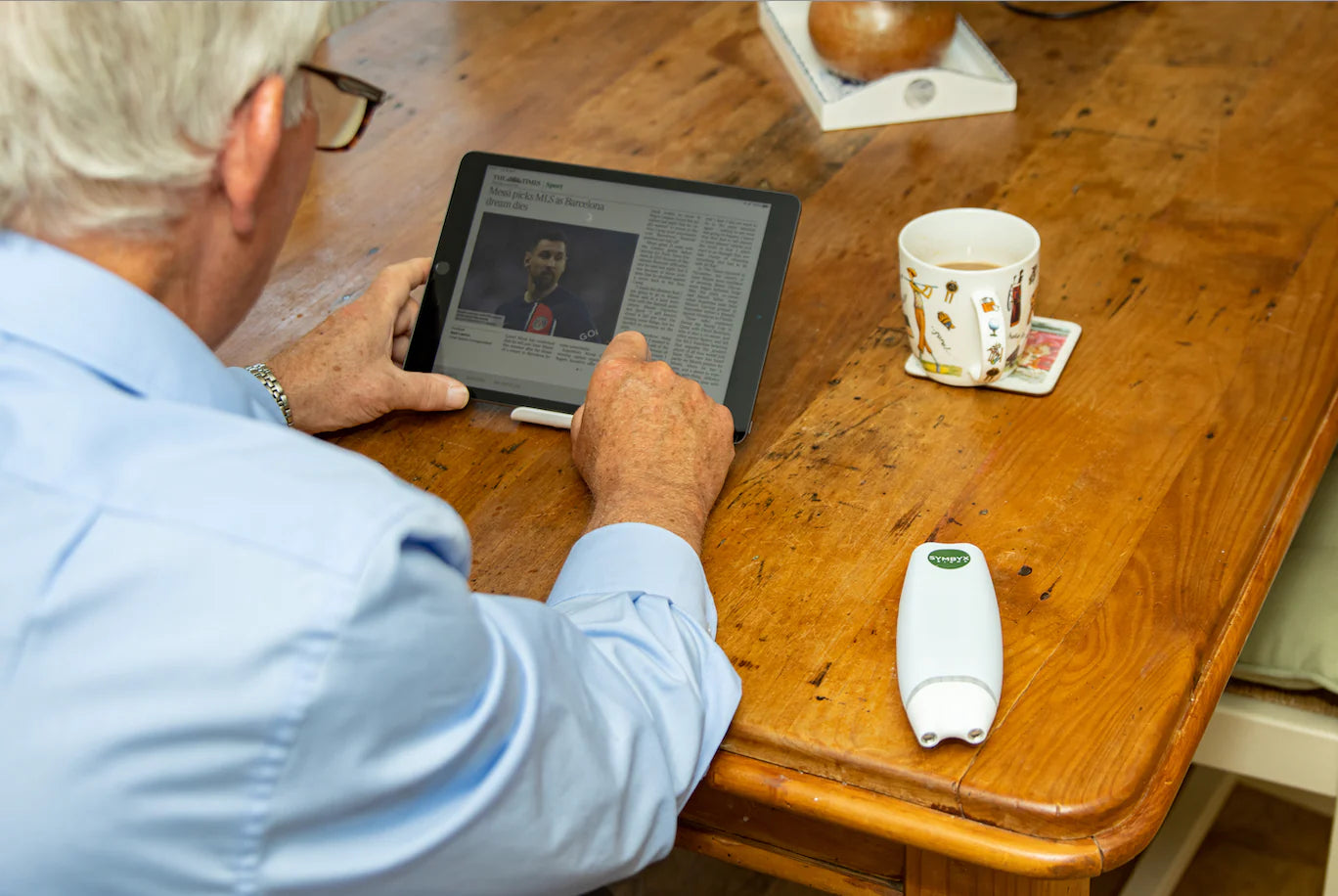March 31, 2022
Pathway to FDA & Health Canada approvals
-
Ethics approval received for Parkinson’s light clinical trial
- First Canadian study to examine efficacy of treatment on Parkinson’s symptoms
-
Trial to involve 60 participants, a placebo group, and will run initially over 12-weeks
SYMBYX, an Australian medical laser company developing light therapies to reduce the debilitating symptoms of Parkinson’s and other chronic conditions, today said it will begin a major clinical trial in Canada using its proprietary treatment system.
The trial was approved by Advarra Institutional Review Board (IRB).
Anita Saltmarche, a leading neuroscientist and clinician in Toronto, and Orla Hares, a neuro physiotherapist with a special interest in Parkinson's rehabilitation in Hamilton ON, are the co-principal investigators of the study. They will be assisted by a team of US and Australian scientists. This is the first North American study to examine the effectiveness of light, known as photobiomodulation (PBM) in reducing Parkinson’s debilitating symptoms. Patient recruitment will commence in April 2022.
Parkinson’s is the world’s fastest growing neurodegenerative disorder, ahead of Alzheimer’s. It is currently incurable. It is a progressive neurological condition caused by a lack of dopamine, a neurotransmitter or chemical messenger in a part of the brain (the basal ganglia) produced naturally, affecting our behaviour and physical functioning such as mood, attention, sleep and movement. Symptoms include muscle rigidity, pain, tremor, difficulty walking as well as depression, anxiety, compromised swallowing and a loss of sense of smell.
Parkinson’s affects between 12 and 15 million people worldwide. The incidence in Canada is expected to climb above 200,000 diagnosed people before the end of the decade. It is believed many more remain undiagnosed. Treatments account for the third highest direct healthcare cost in Canada annually, behind epilepsy and dementia. Sufferers also have the highest rate of prescription drug use in Canada, behind Epilepsy and Alzheimer’s.
“PBM is the use of red and near-infrared light to stimulate healing, relieve pain and reduce inflammation,” Ms Saltmarche said.
“We know it is effective in treating various neurological conditions, including concussion, dementia, aphasia post-stroke, and autism. The therapy is non-invasive, safe and effective,” she said.
“The SYMBYX treatment system already has regulatory approval in the UK, EU, Australia & NZ. Our trial will involve PBM plus exercise. We anticipate publishing initial results by fall 2022.”
Patients previously treated with PBM have returned to playing the piano, report being able to shop, carry groceries and garden more easily. Some have recovered their sense of smell.
Earlier trials conducted in Adelaide (BMC Neurology UK, 2021) and Sydney (Photobiomodulation, Photomedicine and Laser Surgery, 2022), showed significant reductions in patient symptoms. Patients involved in trials in Adelaide showed improved mobility, cognition, dynamic balance and fine motor skills after 12 weeks. Patients have maintained their benefits for over two years. A more recent trial conducted in Sydney showed PBM to be an effective treatment for a number of clinical signs with some being maintained despite lengthy COVID lockdown restrictions.
SYMBYX has also recently partnered with The Hospital Research Group (supporting people with Parkinson’s in South Australia and the Northern Territory) and Flinders University to run a separate trial in Australia.
This trial will run over 52-weeks, include a control group and be double- blinded, thus reducing the potential for placebo effect.
“The combined patient numbers from the new Canadian and Australian trials will add significantly to the existing body of evidence supporting PBM therapy for Parkinson’s”, according to SYMBYX Chief Executive Dr Wayne Markman.
“The Canadian results will form the foundation of our FDA and Health Canada approvals,” he said.
“This is critical research into Parkinson's - the world's fastest growing neurodegenerative condition, and one that typically doesn’t improve. The best results are definitely achieved with laser therapy in conjunction with a healthy diet, regular exercise, a realistic approach to treatment and care from qualified practitioners and supportive family members.”
Background:
PBM works in several ways to reduce Parkinson’s symptoms:
- it targets cell mitochondria (the engine of the cell), where the cell’s energy is produced (known as ATP) driving all human life - fatigue is a common symptom of Parkinson’s;
- ion channels in nerves are modulated downwards resulting in reduced chronic pain associated with muscle spasm and rigidity;
- inflammation is reduced through metabolism of anti-inflammatory bio-markers;
- additional neuro-transmitters, already in short supply in a Parkinson’s patient, are manufactured in the gut – over half our dopamine and 85% of our serotonin is actually metabolised in the colon;
- treatment therefore has a typically positive cognitive effect (reducing ‘brain fog’ while improving sleep, speech, mood and initiative);
- motor improvements include balance, gait and fine motor control such as handwriting.
Co-Principle Investigators, Anita Saltmarche and Orla Hares are available on +1 426 579 5773 or +1 416 770 6005, respectively.
SYMBYX CEO Dr Wayne Markman is available for interview on +61 411 554 553 or wayne@symbyxbiome.com.

